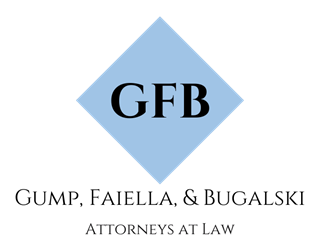CLIENT LOGIN
×Motorcycle Accidents
Were you injured in a motorcycle accident? At Gump, Faiella & Bugalski, we represent individuals who were hurt as a result of negligent drivers on the road. It is important that you first seek medical care, and then get advice from a competent law firm. You should not hesitate to consult with a Columbia motorcycle accident attorney as soon as possible to get started on filing a personal injury lawsuit against the responsible party.
A few of the most common injuries sustained in motorcycle accidents include:
- Brain injury
- Spinal cord injury
- Head and neck injury
- Back injury
- Burn injury
- Amputation
Tirelessly Protecting Your Rights
When you hire our firm to represent your case, you can trust that we can work hard on your behalf. Our top priority in any case is to obtain a positive resolution and maximum compensation for you and your family. If you or a loved one suffered an injury in a serious motorcycle accident, it is important to have an attorney who can hold them accountable for their actions.
Hire Our Personal Injury Firm Today
Our Columbia motorcycle accident attorneys and legal team know that a successful personal injury lawsuit requires a significant amount of research. We are not afraid to take the time to complete a thorough investigation to get to the bottom of any case we take on. By looking at all of the facts, we are able to work toward achieving the best possible results. We also work on a contingency fee basis, so that you don’t have to worry about paying us unless we win your case.
FAQ: Crashworthiness
-
Crashworthiness – what is it?
Crashworthiness is the concept that a motor vehicle is designed and manufactured so that it affords its passengers protection against injury or death in a wreck. For example, occupants of a vehicle usually sustain little or no injury during the initial impact with another vehicle. The most severe and catastrophic injuries frequently arise in a second collision where the occupants are thrown against some part of the interior of their automobile. Crashworthiness really concerns the injuries resulting solely from the person’s colliding with part of their vehicle.
Consequently, vehicle manufacturers are under a duty to use reasonable care to make a reasonably crashworthy vehicle. Courts have routinely found that collisions are a readily foreseeable part of the normal use of a vehicle.
Usually, the manufacturer is only liable in a crashworthiness case for those injuries that are directly attributable to a defect in the vehicle. For example, a passenger in a vehicle that is hit from behind would more than likely incur some injuries and damages as a consequence of the accident. However, if the seat back in the vehicle is defective and collapses, a passenger can incur significant back injuries, including a broken back or neck. The extra injuries incurred as a result of the defect are the injuries for which recovery is sought in a crashworthiness case.
-
Does it matter if the vehicle no longer exists?
It is very useful to preserve the accident vehicle after the wreck. Part of what we do, having met with clients who have a worthiness case that we intend to pursue, is to immediately investigate how to obtain the accident vehicle. However, the absence of the accident vehicle can be overcome, providing there are adequate photos of the accident vehicle showing the defect in the vehicle.
-
What is a defect?
There are three general types of product defects:
- Manufacturing defect: when somewhere in the actual manufacturing process itself there is a flaw which leads to a product that differs from the manufacturer’s intended result. For example, if a car fails to include a certain type of roll bar despite the design requiring them.
- Design defect: when a product is actually manufactured according to the manufacturer’s intention but is nonetheless unsafe. For example, a motor vehicle designed with a fuel tank located in a dangerous position which is likely to rupture in foreseeable collisions.
- Failure to warn: when a manufacturer has failed to warn users about a potentially dangerous aspect of a vehicle, the product is considered defective because of its inadequate warning or lack of warnings.
-
What type of worthiness actions does your firm handle?
We have in the past, and will continue in the future to handle all types of worthiness actions. We have been involved in actions against many of the leading automobile manufacturers, including General Motors, Mazda, and Chrysler. Some of these cases have involved the design and failure of seat belts, roof and hood. We have been involved in cases where a vehicle has rolled over due to instability, and many other situations which have arisen because of aspects of a vehicle’s crashworthiness.
-
How does the fact that I caused the accident affect my crashworthiness action?
The concept of crashworthiness acknowledges that accidents often have multiple causes and centers around the enhancement of resulting injuries caused by the defective vehicle. The issue is really whether or not the defect increased a person’s injuries. Fault of the injured person does not usually prevent that person from recovering for injuries in a crash you must remember, however, that courts do compare the relative fault of an individual causing an accident with the relative fault of the manufacturer alleged to have provided a vehicle that is unsafe. Depending on how the fault is compared, it may lead to a reduction in the amount of damages to which you are entitled.
-
How do I know that you will do a good job on my case?
We have experience in cases of this nature and are familiar with how these cases need to be handled and pursued. We pursue any case that we accept to the best of our ability and work tirelessly to achieve the very best result for our client.
Powered by



